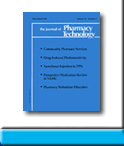 |
 |
EVALUATION OF
ANTICOAGULATION THERAPY IN AN ACADEMIC NURSING HOME
Shyam D Karki and Susan M Lander
To request full article click here.
OBJECTIVE: To evaluate the warfarin management patterns in an academic nursing home and evaluate what predetermined factors are associated with variability in the international normalized ratio (INR).
SETTING: A 566-bed academic nursing home.
METHODS: A retrospective chart review of all residents receiving warfarin therapy for >3 consecutive months in a calendar year was conducted. Data were collected regarding the number of times the INR fluctuated during the follow-up period and the degree of fluctuation between each blood sampling. An INR that changed by 0.5–0.99 between samplings was classified as a small fluctuation; a change >0.99 was defined as a large fluctuation. The sample was divided into 2 groups, easy management and difficult management, based on variability in the INR. The easy-management group consisted of residents who had small fluctuations in the INR and who had INRs outside of the therapeutic range <10% of the time. The difficult- management group had large fluctuations in the INR, with the ratio outside of the therapeutic range >10% of the time.
RESULTS: Thirty-seven patients were taking warfarin (mean ± SD age 71 ± 14 y; mean number of medical illnesses 7.6 ± 3). The mean length of time of warfarin therapy was 10.6 ± 3.2 months. The average dose and INR were 4.0 ± 1.9 mg and 2.0 ± 0.3, respectively. No statistically significant differences were found between age, dose, or INR. For patients who had INR values exceeding the therapeutic range, there was no significant difference between the management groups in length of treatment, age, number of medical illnesses, number of high-risk factors, dose, average monthly INR, number of medication adjustments per year, albumin and creatinine levels, total number of medications, or number of routine medications known to interact with warfarin. The difficult-management group received more medications known to interact with warfarin than the easy-management group. These medications may have caused the INR to increase above the normal range (p = 0.003), as well as producing a large (p = 0.001) or small fluctuation (p = 0.0007) in the INR. Of all the interacting medications, 55% were antibiotics and 28% were analgesics. No statistically significant differences in outcome were seen between groups.
CONCLUSIONS: Results of this study indicate that large variations (>0.99) in the INR may be due to newly prescribed medications that enhance the anticoagulant effect of warfarin. These variations may be minimized by closely monitoring the INR when a drug known to interact with warfarin is prescribed.
J Pharm Technol 2002;19:141-5.
To request full article click here.
|
|
|
||
|

